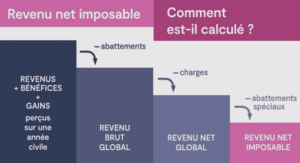Mobile communication has been one of the fastest developing technologies during the past decades. It has changed and will continue to change people’s life and work and to have big societal and economic impact. Wireless communication systems have seen a revolution about once every 10 years. Expected to commercialize around 2020, the 5th generation (5G) mobile networks are under intense development activities.
Key 5G Candidate Technologies
Today a number of new technologies are being developed for 5G networks. Some key technologies are: ultra-dense networks, massive MIMO, mmWave, D2D communications, cloud radio access networks, non-orthogonal multiple access, M2M communications, mobile edge computing, wireless caching, and full duplex communication. In what follows we briefly describe these technologies and how they contribute towards the requirements of 5G.
Ultra-Dense Wireless Network
As an intuitive solution, cell splitting and densification has been one of the most effective ways of increasing system capacity since the beginning of mobile industry. Recently, the deployment of ultra-dense networks (UDN) has emerged as one of the main solutions to meet the challenges of fulfilling an extremely high capacity density and peak high rate requirements of 5G. Although seemingly straightforward, adding enormous small cells has proved to be difficult and will require new interference mitigation and backhauling solutions as well as new installation techniques. The interference statistics in UDN is different from those of existing networks with one or a small number of access points (Ge, 2016; Liu, 2015). This is because as networks becomes denser, there can be a large number of strong interferers rather than one dominant interference. Then, managing the interference with less information sharing among the BSs is an important challenge and may require new frequency reuse methods. Additionally, due to the large numbers of BSs, energy efficiency is very important in UDNs.
In the conventional cellular networks all BSs are always active. This is due to the fact that, in such networks, BSs are sparsely deployed while the density of users is much higher than that of BSs; as a result, it is reasonable to assume that there is always at least one active user to be served by the BS. With this assumption, universal frequency ruse methods were applied. However, in UDN some BSs have no user to serve and should be turned down to improving energy efficiency.
Massive MIMO
Large Scale Antenna Technology also known as massive Multiple Input and Multiple Output (MIMO), is an extension of MIMO in which the number of antennas is significantly larger than the number of downlink data streams. Massive MIMO uses large antenna arrays at base stations to simultaneously serve many user terminals (Larsson, 2014).
This technology breaks the scalability barrier of the point-to-point MIMO by not attempting to achieve the capacity limit, but, paradoxically, by increasing the system size (Marzetta, 2015; Marzetta, 2016). A decade after its inception as an academic idea, this concept has evolved to one of the hottest research topics in the wireless communications community and 5G standardization. Massive MIMO essentially exploits antennas at the transmitter and receiver to provide higher throughput and better spectrum efficiency. The advantages of Massive MIMO regime are not, however, limited to better throughput and spectral efficiency but also include several other advantages such as simplified signal processing, rate allocation, and user scheduling, increasing energy efficiency, and increasing the number of users via special multiplexing the number of users that can be served (Larsson, 2014; Marzetta, 2015; Marzetta, 2016). However, building hundreds of low-cost components (such as radio frequency chains and down/up converters) will bring hardware impairments. This in turn implies that hardware imperfections such as phase noise and I/Q imbalance are no longer negligible. In addition, pilot contamination, which has long been a bottleneck in multi-cell systems, becomes even more severe than that in traditional MIMO systems. Despite these difficulties, massive MIMO is becoming a reality now. This is partly because the conventional technology is unable to deliver the spectral efficiencies that 5G requires. In addition, real-life prototypes have shown record spectral efficiency of 145 bps/Hz, which has increased the confidence in the value of this technology.
INTRODUCTION |




